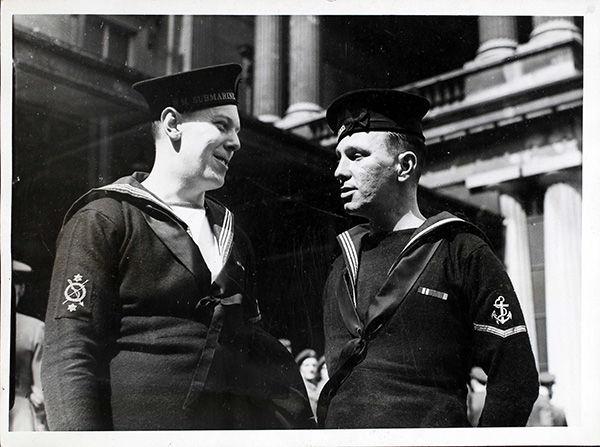Military rank structures and trade designations can be difficult to understand for the un-initiated amongst us. Anyone who has not served in the military may be completely caught out by an ‘Artificer’ or ‘Farrier-Sergeant’ in military records. The Royal Navy ranks can be an even more confusing prospect, given that records often listed a sailor’s trade as his rank, the two being used interchangeably. In this tutorial we’ll isolate some of the more obscure trades and explain what they do and how you may find them listed in our records. For reference, the actual ranks of ratings (crewmen who are not officers) in the Royal Navy are:
- Able Seaman
- Leading Rate
- Petty Officer
- Chief Petty Officer
- Warrant Officer Class 2
- Warrant Officer Class 1
On to the Royal Navy trades, and three of the more common and unusual ones you will find in the Forces War Records database.
As with all of the Armed Services, potential recruits signed up to the Royal Navy with a good idea of what they wanted to do (their trade), sometimes based on their civilian work. Anyone with mechanical or engineering experience would be much more useful as an engine room artificer, for example, than as a writer.
Writers were primarily clerical, being responsible for legal, pay, welfare and career issues for a crew. When the ship went into action, they could also be utilised with damage control parties for instance, passing vital information to combat floods and fires. Each trade was broken down into numerous levels, similar to the Royal Navy’s rank structure, but also denoting time in service and experience in a particular role. For example, writer could be broken down to:
- Chief Petty Officer Writer
- Petty Officer Writer
- Leading Writer
- Writer
- Writer Probationer
- Boy Writer
We also mentioned artificers previously, and I will admit that, when I first joined Forces War Records, even I didn’t know what they were! Artificers are essentially skilled mechanics, and within the Royal Navy can be assigned a variety of jobs in the engine room as previously mentioned, but also in the electrical, aircraft and ordnance sections. You’ll most commonly find artificers listed as engine room artificers in our records, sometimes abbreviated to ERA.
They can similarly be broken down to:
- Chief [Engine Room, Electrical, Aircraft and Ordnance] Artificer
- Artificer, 1st Class
- Artificer, 2nd Class
- Artificer, 3rd Class
- Artificer, 4th Class
- Artificer, 5th Class
- Artificer Apprentice
Talking of artificers leads us quite nicely to the role of stoker, a trade which underwent a great deal of change when the switch from coal to oil fired boilers took place in the Royal Navy’s surface fleet. Prior to oil fired boilers, stokers were primarily responsible for transporting and shovelling coal to the furnaces. Coal fired boilers required a constant feed to keep temperatures high enough for the production of steam, and of course you can’t pump coal in the same way as oil! Thus the advantages of oil, and now diesel, gas or nuclear engines in modern surface fleets, are pretty obvious. With the decline of coal fired ships, stokers’ duties shifted towards the field of engineering, so that they could be responsible for anything from the propulsion systems to hydraulics, electrical and firefighting systems. The word ‘stoker’ is now only a colloquial term for a marine engineering technician, but in our records you might find your relative listed as any of the following:
- Chief Stoker
- Stoker Petty Officer
- Leading Stoker
- Stoker, 1st Class
- Stoker, 2nd Class
- Stoker, Fire Fighter
Do you need help with an abbreviation or deciphering documents
If you ever find a rank, trade or abbreviation confusing you can always seek help from our Experts

